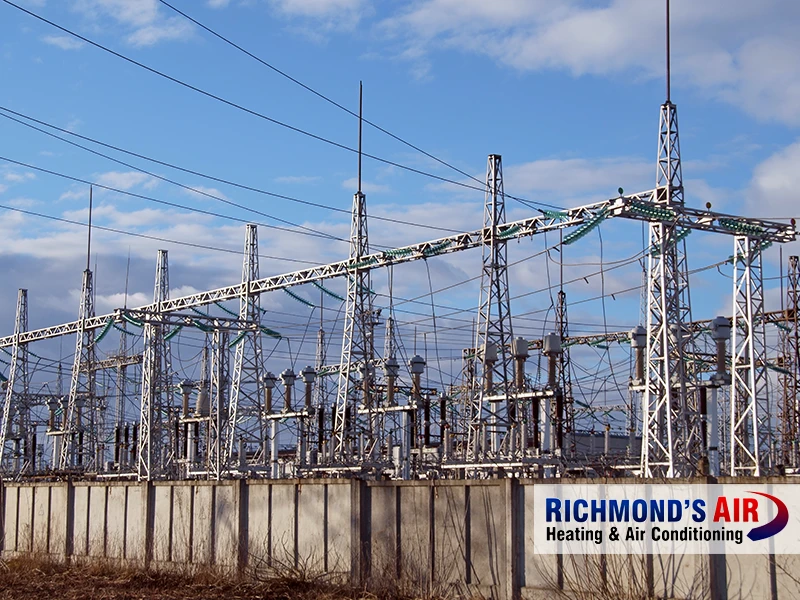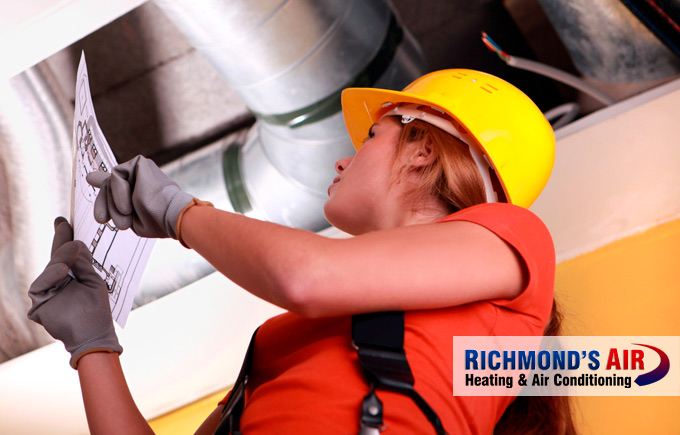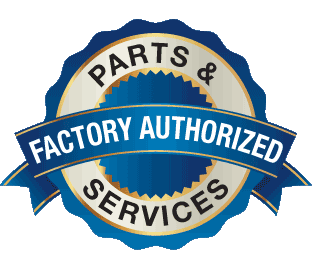
In Houston, TX, where the weather can be as unpredictable as the grid, understanding the nuances of power disturbances like brownouts, blackouts, and power surges is essential. As a homeowner, knowing the difference can help you prepare and protect your home, especially your HVAC system.
What are brownouts?
A brownout is a reduction in voltage in the electrical power supply. Unlike a blackout, where power is completely lost, brownouts involve a decrease, not a cessation, of power.
This decrease can last for minutes or even hours and is often implemented intentionally by utility companies to relieve stress on the power grid during peak usage times or to avoid a complete blackout.
Impact of brownout on HVAC systems
- Reduced efficiency: During a brownout, your HVAC system may run less efficiently. The lower voltage can cause it to work harder to maintain the same level of performance, potentially leading to more wear and tear over time.
- Potential damage: Certain components of HVAC systems, such as condensing units, fan motors, thermostats, or heat pumps, are sensitive to voltage fluctuations. A prolonged brownout can cause damage to these components, leading to malfunctions or system failures.
What are blackouts?
Blackouts are complete interruptions in power supply. These can be localized to a specific area or widespread due to severe weather events, system overloads, or other major electrical grid failures.
Preparing your HVAC for blackouts
- Surge protection: Install whole-house or HVAC surge protectors on your electrical panel to safeguard your HVAC system from potential damage caused by electrical surges during power fluctuations or spikes.
- Regular maintenance: Regularly maintained HVAC systems are more resilient and better prepared to handle power resumption after a blackout.
Installing a whole house surge protector is a crucial step in safeguarding your home’s HVAC system, one of the most significant investments in your household.
HVAC systems are expensive to repair or replace and contain sensitive electronic components that are highly susceptible to damage from power surges. Such surges can occur unexpectedly and wreak havoc on these systems.
By proactively protecting your HVAC system with a whole-house surge protector, you can greatly extend its lifespan, ensuring it continues to operate efficiently and reliably for years to come.
This protective measure is a small investment compared to the potentially high costs of repairing or replacing a surge-damaged HVAC system, and it provides invaluable peace of mind by securing one of your home’s most essential components against unforeseen electrical events.
When to replace your AC and how much is the installation cost?
There are a lot of factors that go into an AC installation. Not only the location but also the manufacturer, the type of system, the size of your home, etc.
Brownouts vs. blackouts: Key differences
- Power level: Brownouts are partial reductions in power supply, whereas blackouts are total power losses.
- Duration: Brownouts are typically temporary and may be used as a measure to prevent blackouts, which can last for an indefinite period.
- Impact on appliances: Brownouts can cause flickering lights and reduced performance in appliances, while blackouts result in a complete shutdown of electrical devices.
Is a brownout the same as a power surge?
No, a brownout and a power surge are not the same thing. They are actually opposites in terms of how they affect the electrical flow in your home.
Brownout
- A brownout is a temporary decrease in voltage. This means that the electricity flowing to your home is at a lower level than normal.
- This can cause lights to dim, appliances to run at reduced power, or even to shut off completely.
- Brownouts are usually caused by an overload on the power grid, such as when there is a high demand for electricity. They can also be caused by problems with the equipment that supplies electricity to your home.
Power surge
- Power surges are sudden spikes in voltage that can significantly exceed normal levels, potentially causing damage to appliances and electronic equipment, including HVAC systems.
- Surges can result from lightning strikes, power outages, or the operations of high-power electrical devices.
| Feature | Brownout | Power surge | Blackout |
|---|---|---|---|
| Voltage | Decrease | Increase | No electricity |
| Cause | Overload, equipment issues | Lightning, equipment issues | Grid failure, natural disasters |
| Effects | Lights dim, appliances slow, appliances shut off | Lights flicker, equipment damage | No electricity |
The unexpected darkness of a brownout or blackout can disrupt lives and damage precious equipment. But with some preparation and knowledge, you can minimize the impact of these power dips on your home and HVAC system.
Here’s a breakdown of recommended actions for each scenario:
What happens in a brownout, and what can you do?
- Dimming lights, slow appliances: A brownout indicates a dip in voltage, resulting in dimmed lights and potentially sluggish appliances.
- Take it easy: Avoid putting additional strain on the grid by running heavy appliances like dishwashers, washers, or dryers.
- Surge protection: Invest in surge protectors for sensitive electronics like TVs and computers. While they won’t prevent brownouts, they can shield your devices from potential voltage spikes when power returns.
- Monitor the situation: Stay informed about the cause and expected duration of the brownout through local news or utility updates. If it’s a short-term dip, simply wait it out.
What happens in a blackout, and what can you do?
- Complete darkness: A blackout means a complete loss of power, plunging your home into darkness.
- Safety first: Use flashlights or battery-powered lanterns for immediate illumination. Avoid candles due to fire risk.
- Food safety: Keep refrigerator and freezer doors closed to preserve food for as long as possible. A full freezer should stay safe for up to 48 hours, while a half-full one for about 24 hours.
- HVAC precautions: Turn off your HVAC system at the thermostat and circuit breaker to prevent damage from power surges when power returns.
- Stay informed: Like with brownouts, keep yourself updated on the blackout’s cause and estimated restoration time.
General preparedness tips
- Emergency kit: Assemble an emergency kit with essentials like water, non-perishable food, battery-powered radio, first-aid supplies, and flashlights.
- Alternative power sources: Consider backup power options like portable generators or battery-powered fans for extended outages.
- Regular maintenance: Schedule regular maintenance for your HVAC system to ensure optimal performance and minimize the risk of breakdowns during power outages.
By following these recommendations and staying informed, you can weather the storm of brownouts and blackouts with minimal disruption to your home and HVAC system. Remember, preparation is key to staying safe and comfortable during any power outage.
Need expert help? Contact Richmond’s Air in Houston today!
Dealing with voltage issues requires professional expertise. A licensed electrician or HVAC contractor can ensure your home’s electrical system meets safety standards and your appliances are protected.
Understanding and preparing for brownouts, blackouts, and power surges in Houston can save you from unexpected HVAC system repairs and ensure your comfort through all seasons.
Richmond’s Air is committed to helping the Houston community stay cool and comfortable, no matter what surprises the Texas weather—or the power grid—may bring.
Contact us today for any questions or concerns regarding your HVAC system’s performance, or to schedule a maintenance check-up.
 Read reviews
Read reviews









